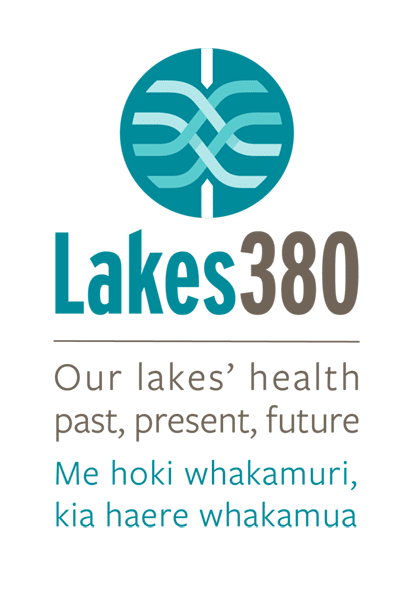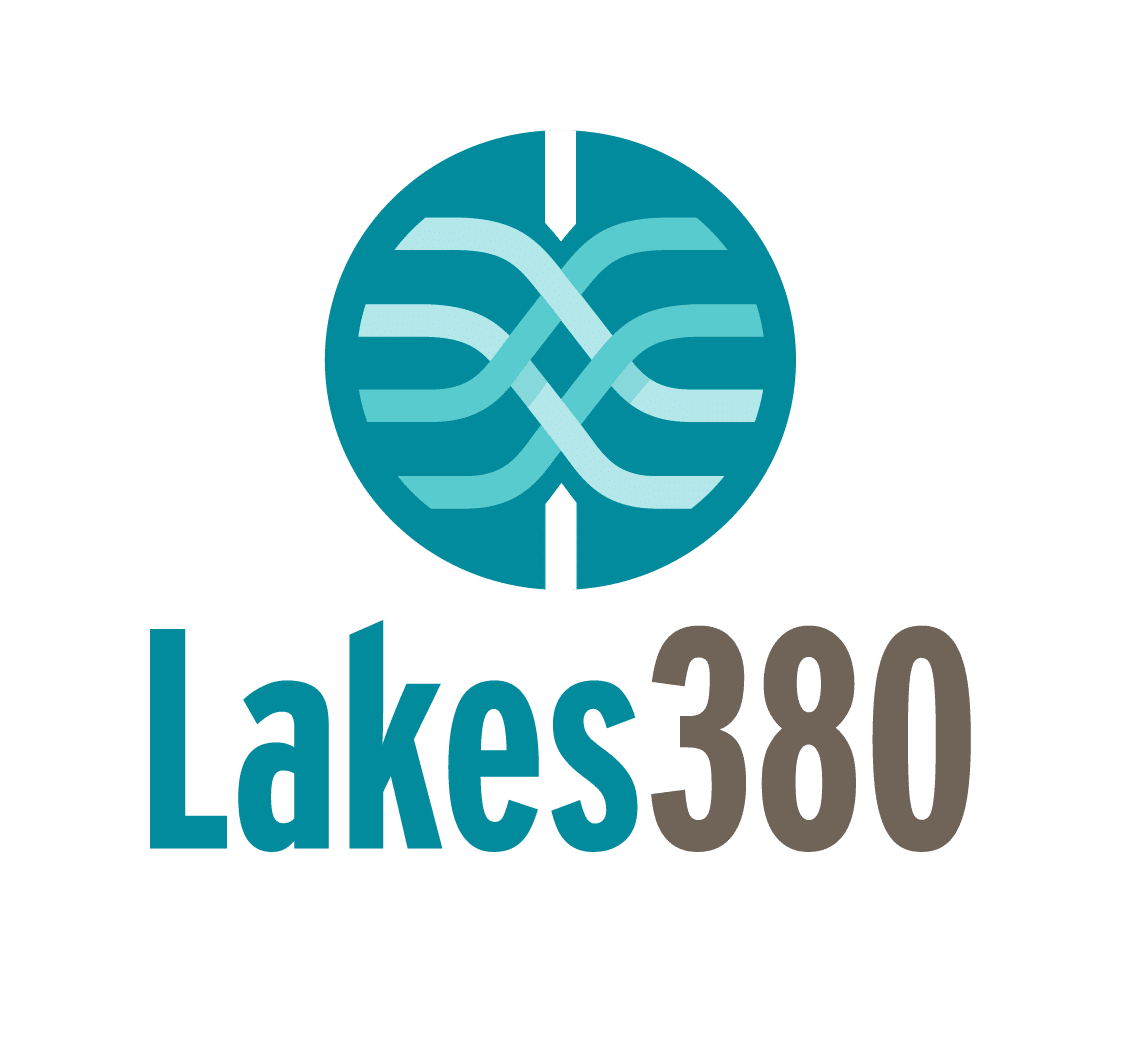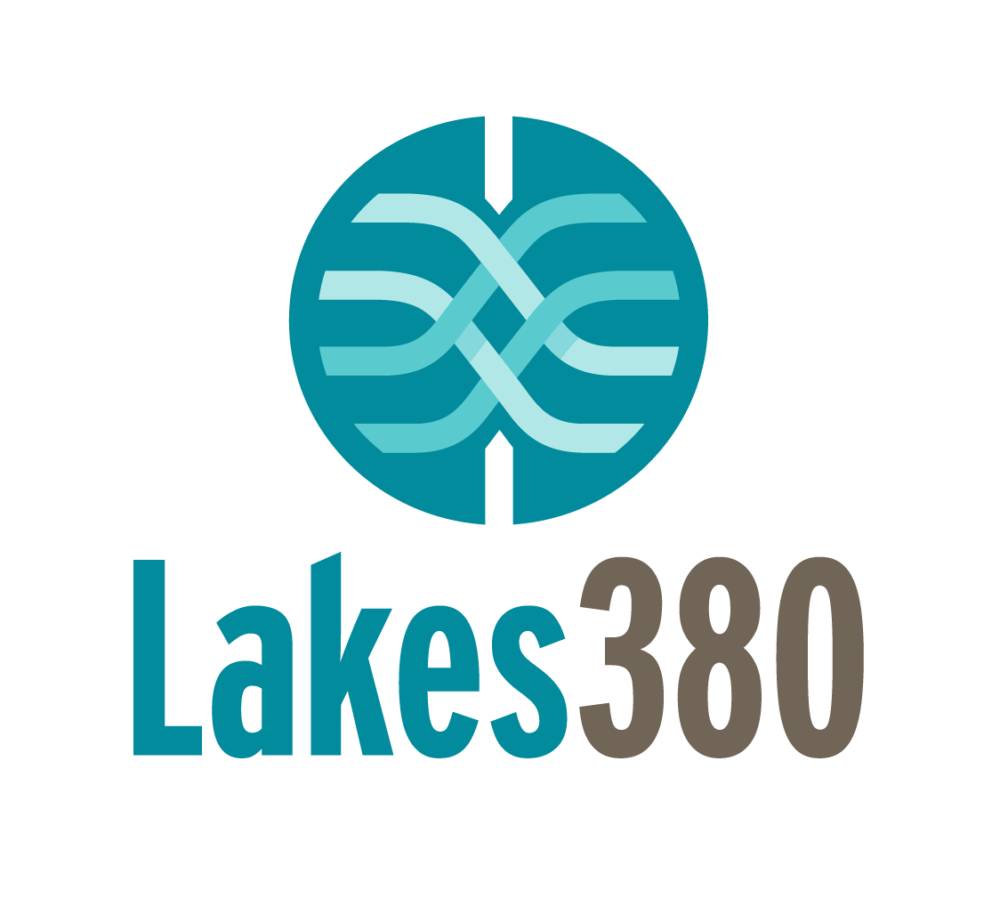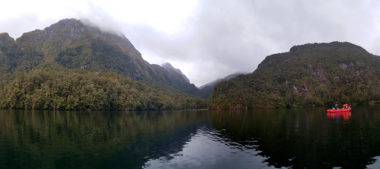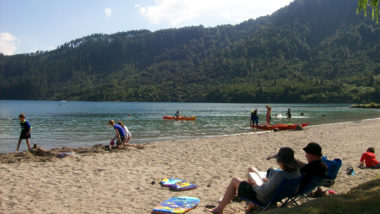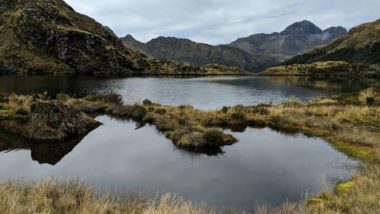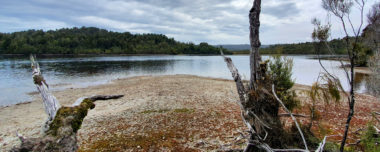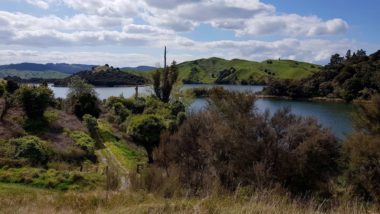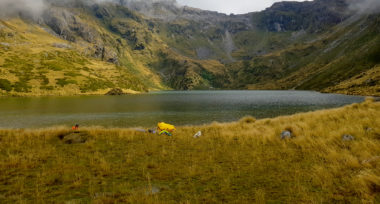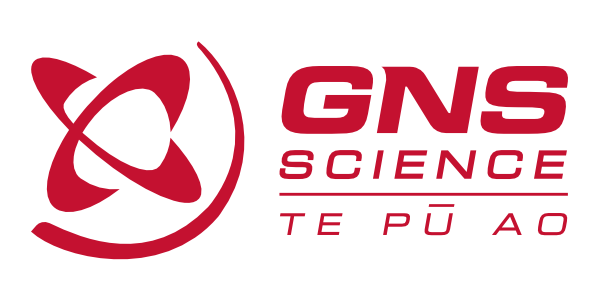Laboratory Analysis
In the laboratory the sediment cores get split, scanned and subsampled
for many different types of analysis.
Splitting and subsampling the core
To access the sediment, the sediment core is split length ways using two cutters either side of the plastic core tube. A metal guillotine then slices through the sediment. Now in two halves, small amounts of sediment are extracted from one half down the entire length of the core using sterile equipment, this process is called subsampling.
These subsamples are analysed for eDNA, Pigments, Pollen, Diatoms, Chironomids and Carbon/Nitrogen. Pieces of organic matter such as leaves, twigs and seeds found in the sediment core are extracted for Radiocarbon analysis. The other half of the core is left intact and sent to the hyperspectral and itrax scanners for analysis (see below).
Analysis of the sediment core and other samples
Pollen
Pollen grains are produced and spread as part of a plants’ reproductive process. The outer walls of the pollen are very tough.
Following some initial sample preparation to remove the surrounding sediment, pollen can be identified based on its size and shape under a microscope. The types and abundance can be used to determine how the plants within and around a lake have changed.
Diatoms
Diatoms are single celled algae which can be used to assess how lake health has changed.
They live in most aquatic environments and are sensitive to temperature, pH, light, nutrients and salinity. Their cell wall is made of silica and they preserve well in lake sediments. After laboratory preparation to remove sediment, microscope analysis is performed to identify diatom species. Different species prefer specific environmental conditions so we can use the composition data to infer and reconstruct past lake health.
Chironomids
Chironomids are non-biting midges (small flies) that have aquatic larvae. They can help us understand how temperature and nutrients in a lake change.
Chironomid fossils preserved in lake sediments can be identified using a microscope and used to give us insight into changing temperature and nutrients. The growth and development of chironomids is strongly dependant on environmental conditions within a lake. Different species of chironomids have specific preferences for nutrient levels and temperatures.
Carbon-14 radiocarbon dating
Radiocarbon dating is a method we use to determine the age of a layer in a sediment core.
This method is used to determine the age of an object made up of organic material by using the properties of radiocarbon. We extract leaves, twigs and seeds out of sediment cores and record the depths at which they were found. Carbon-14 is an isotope that occurs naturally in plants and animals. When the animal or plant dies, the amount of Carbon-14 begins to decrease and we can determine the remaining amount and use this to calculate the age of a sample.
Environmental DNA
Environmental DNA (eDNA) is analysed to investigate how biological communities or a particular species change over time.
eDNA in aquatic systems refers to the genetic material released by organisms such as when small bits of tissue such as skin cells flake off, or through excretion and saliva, and other secretions. Environmental DNA can also be extracted from whole organisms such as algae and bacteria or their tissue. In this project, we are investigating changes in microbial and algal communities. In some lakes we will also use eDNA to assess plant and fish communities. We are also developing specific tests to identify culturally significant organisms such as tuna (eel), kōura (freshwater crayfish) and kākahi (freshwater mussel).
Lead and caesium dating
This data helps us understand how old the recent sediments are which allows us to determine when changes in lake health occurred.
Lead-210 is a naturally occurring radioactive isotope. By examining how it decays it can be used to identify the age of sediments up to 150 years old. Caesium-137 is a man-made radioactive element created by atmospheric testing of nuclear weapons and can be used to identify the age of sediments deposited since 1950.
Pigments
The natural coloring’s in plant and animal tissue are called pigments. By testing the pigments found in sediment cores we can identify types and amount of phytoplankton (algae and cyanobacteria) that have lived in a lake.
Because different types of phytoplankton thrive in different water quality conditions, this helps us understand the historical water quality of the lake. We extract the pigments out of the sediment using liquids to dissolve them and then analyse them using a technique called HPLC (high-pressure liquid chromatography). This allows us to identify specific pigments and estimate the amounts of different types of algae present in a sample.
Hyperspectral scanning
The data from the hyperspectral scanner helps us understand shifts in algae (lake productivity) over time.
Each sediment core is scanned on a high-resolution hyperspectral scanner. The scanner camera analyses a wide spectrum of light (visible and infrared light). The hyperspectral uses many wavelengths of light to identify shifts in algae communities in sediment cores.
Itrax high-resolution XRF core scanning
The data from the scanner can be used to assess how lake conditions change over time and characterise erosion in the land around the lake.
This machine scans the surface of the split core and rapidly generates geochemical data, for example, the abundance of aluminium and titanium. It also take x-ray images that can show changes in the core that may not be visible to the naked eye.
Surface sediment nutrients
We analyse the surface sediment to help us understand how much nutrient is bound up in sediment and whether this is released back into the lake.
Nutrients in lakes, particularly phosphorus, are commonly bound up in the lake sediments. Various biogeochemical processes such as low oxygen concentrations or elevated pH in the water column may cause the release of nutrients from the sediment back to the water column where it is available to fuel plant and algal growth. To understand how susceptible lakes are to this ‘internal’ nutrient loading, we analyse the sediment nutrient geochemistry including total concentrations of nutrients, organic material and nutrient binding metals. We also undertake experiments which provide insight into how phosphorus is bound in the sediment and to see how nutrients are released under low oxygen conditions.
Water Quality
Water samples help us understand the physical and chemical conditions in the lake.
The samples are analysed for chlorophyll-a, total and dissolved nutrients, suspended solids, organic material and dissolved metals.
